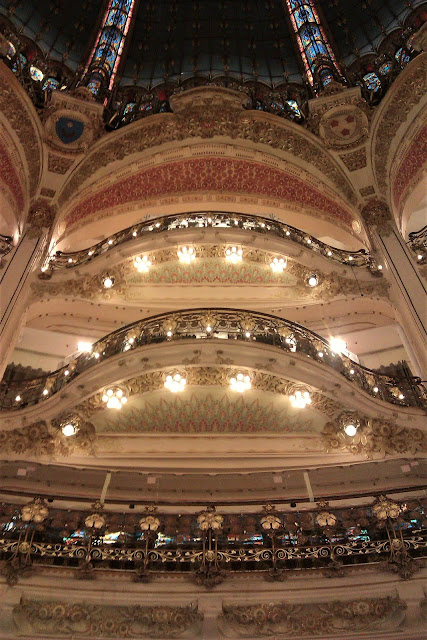Photo: View over the inner balconies @ Galeries Lafayette.
Everybody know Paris for being one of the capitals of fashion around the world and so it is confirmed with the quality of Parisian fashion institutes and schools. This reaches its highest point during Paris Fashion Week, the biggest event concerning new trends and world's best designers.
Besides this clothing exhibition, included in the "big 4" together with New York, London and Milan, fashion is at every corner of the city. Its maximum expression is held in the Avenue des Champs Élysées and in the luxurious shopping mall Galeries Lafayette (photo). Best designers around the world have their fancy boutiques in this 5-floor commercial mall, such as Christian Dior, Louis Vuitton, Balenciaga, Dolce & Gabbana, Versace, Yves Saint Laurent, Tiffany & Co, Ralph Lauren, Tommy Hilfiger, Prada, Jean Paul Gaultier...
Lafayette is located in the Opera district, nearby the famous Opéra Garnier, halfway from the city centre to Montmartre neighbourhood. The rooftop offers great views over Paris, check it out!




